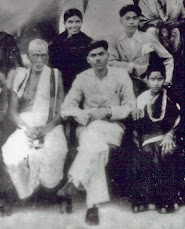I first became aware of Dr. Surya in 1961 while preparing for my DPM Examination in London. I saw his name in the acknowledgements section of the famous textbook, Clinical Psychiatry by Mayer-Gross, Slater and Roth. It was not common in those days to find an Indian being acknowledged by English authors. I was naturally curious to know more about this person.
I had my first meeting with him in 1964 in Bangalore at the annual conference of Indian Psychiatric Society. He presented a brilliant paper on “Basic Concepts of Psychotherapy in the Indian Setting”. I later went to congratulate him in his office. He was then an Associate Professor of Psychiatry. He welcomed me and then for the next 15 minutes spoke non-stop about the relevance of Bhagavad Gita! I was bit dazed by his vehemence, but I was nonetheless impressed with the intensity with which he spoke. Here was a man who talked out of conviction, unlike most others at the conference who only quoted foreign authors! Next year I got an opportunity to know Dr. Surya better. By then he had become Professor of Psychiatry at Bangalore and was appointed the Chairman of the ICMR’s expert group on mental health while I became the Secretary of the group. For three years we worked together attending yearly meetings, reviewing various proposals submitted for funding. Psychiatric research in India was still in its infancy in those days but there were already significant trends emerging. For example, Dr. K.C. Dube’s monumental epidemiological study in Agra had just started and the report was presented every year for ICMR funds. Dr. Satyanand had started one of the first studies on community psychiatry where a team from AIIMS , New Delhi, was going regularly to rural center in Ballabgarh. The ICMR expert group included stalwarts like Dr. Bhaskaran, Dr. Kirpal Singh and late Dr. N.N.Sen, the clinical psychologist, who was known for his sharp criticism of methodological shortcomings. In these meetings, I saw another side of Dr. Surya-not only his academic excellence but his intense humanity. Unlike some other members of the Committee, he seemed keen to help young scientists to improve their research designs and not to intimidate them by criticism. I came close to Dr. Surya during those years and spent many delightful days in his company. In 1968, I became Professor of Psychiatry at the Postgraduate Institute at Chandigarh. I was looking forward to greater contacts with him when I got the sudden news that on 15 December 1968, Dr. Surya voluntarily resigned his post as Professor of Psychiatry and Director, All India Institute of Mental Health (Now NIMHANS) and has decided to permanently settle in Sri Aurobindo Ashram, Pondicherry “to pursue the study and practice of Yoga”. At that time I could not understand his decision. Dr. Surya was then only 52 years old. He was at the height of his career when he took this unusual step of giving up what was perhaps the highest post in Indian psychiatry at that time and long with that, the usual name, fame and all material comforts. Since then he has lived in Pondicherry pursuing his chosen spiritual path. Many of his students, friends and admirers including myself, occasionally go and visit him in his new surroundings and feel enriched by his company.
Dr. Surya was never formally my teacher but I have learnt a lot from him both in psychiatry and in personal life. Though he was in active academic psychiatry in India, barely for 10 years from 1958 to 1968, he has left a powerful impact on shaping the psychiatric thinking in his country.
Dr. Surya was never formally my teacher but I have learnt a lot from him both in psychiatry and in personal life. Though he was in active academic psychiatry in India, barely for 10 years from 1958 to 1968, he has left a powerful impact on shaping the psychiatric thinking in his country.











